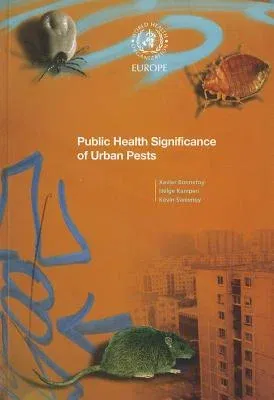X Bonnefoy
(Author)Public Health Significance of Urban PestsPaperback, 23 July 2008

Qty
1
Turbo
Ships in 2 - 3 days
In Stock
Free Delivery
Cash on Delivery
15 Days
Free Returns
Secure Checkout

Part of Series
Euro Publication
Part of Series
Public Health
Print Length
582 pages
Language
English
Publisher
World Health Organization
Date Published
23 Jul 2008
ISBN-10
9289071885
ISBN-13
9789289071888
Description
Product Details
Authors:
Book Format:
Paperback
Country of Origin:
CH
Date Published:
23 July 2008
Dimensions:
24.13 x
16.76 x
3.05 cm
Genre:
Science/Technology Aspects
ISBN-10:
9289071885
ISBN-13:
9789289071888
Language:
English
Pages:
582
Publisher:
Weight:
1406.14 gm